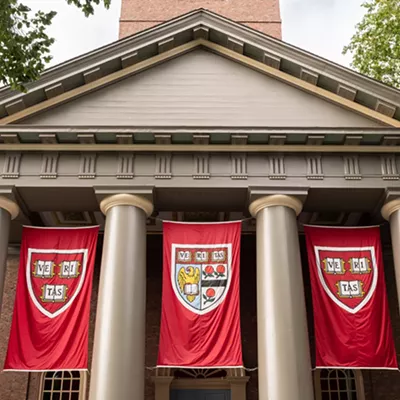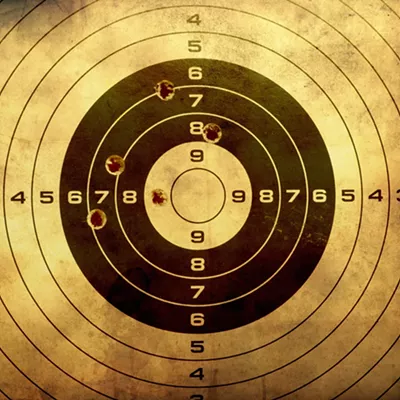Clark had first noticed the Indian practice of head-flattening on Oct. 17 when the expedition spent two days at the confluence of the Snake and Columbia rivers. The desire, it seemed to him, was to compress the head "so as to form a Streight line from the nose to the Crown of the head." Eleven days later, while at rest, Sgt. Patrick Gass laid the groundwork for several decades of historical confusion when he wrote in his journal, "We suppose them to be a band of the Flathead nation, as all their heads are compressed into the same form." He explained that "This singular and deforming operation is performed in infancy in the following manner. A piece of board is placed against the back of the head extending from the shoulders some distance above it; another shorter piece extends from the eye brows to the top of the first, and they are then bound together with thongs or cords made of skins, so as to press back the forehead, make the head rise at the top, and force it out above the ears."
Gass meant that the natives he observed near present-day The Dalles, Ore. practiced skull shaping. Clearly, by his description, Gass is describing a head that is flat on the backside. He was not saying that the Indians he observed were members of the Flathead tribe, a Salish-speaking group in Montana that Lewis and Clark had met during the first week of September. The Flathead tribe of Montana denies that their ancestors flattened their heads and they suggest the origin of the name relates to sign language where they are identified by pressing both sides of the head with the flat of the hands. Their heads are flat on top, not reshaped to form a crown. Gass published his journal in 1807, a year after the return of the expedition to St. Louis and seven years before the journals of Lewis and Clark reached print, so his comment was misinterpreted for many years. Clark maintained his interest in the practice for several more days, noting that, "This amongst those people is considered as a great mark of buty." On Nov. 1, he even made a drawing of the process.
That same day, the expedition passed through the river's fourth, and final, natural obstruction, the "Great Shute," or Cascades of the Columbia. The men managed the feat by laboriously walking the "baggage over the Portage of 940 yards, after which we got the 4 large Canoes over by Slipping them over the rocks on poles placed across from one rock to another." At the end of the Cascades stood "a remarkable high detached rock . . . about 800 feet high and 400 paces around," a conspicuous landmark protected today in Beacon Rock State Park near Skamania, Wash.
Now on the western side of the Cascade Mountains, the environment of the Columbia River influenced the Lewis and Clark Expedition in new ways. For example, the Cascades form a climatic barrier wherein the temperature moderates and rainfall increases. The annual average rainfall at The Dalles is 12 inches. At the Cascades of the Columbia, it exceeds 70 inches annually. Consequently, forests grow tall and close and wild creatures find protection and multiply. Additionally, Clark spotted a harbor seal -- he thought it a sea otter and tried to shoot it -- which seemed to support his belief that since he could not see any more rapids for a long distance, the now calm river "had everry appearance of being effected by the tide." It is true. While the tide of the Pacific Ocean flows only 20 miles into the estuary of the Columbia River, the effects of tidewater can be felt at Beacon Rock, which is 140 miles deep into the river.
Even as the environment had changed, so too did the attitude of the Indians. For some time Lewis and Clark had noticed machine-made clothing and industrial-quality pots at the Indian villages, an indication that they had entered the trade zone of "Boston men" who frequented the mouth of the Columbia River. Lewis and Clark continued to trade with the Indians for nuts, berries, dried fish, dogs, baskets and rain hats, but suddenly the natives "are high with what they have to Sell, and Say the white people below Give them great Prices for what they Sell to them."
NEXT WEEK: The Corps of Discovery reaches the Pacific Ocean.
Robert Carriker has directed eight National Endowment for the Humanities seminars on the Lewis and Clark expedition and is author of Ocean in View! O! the Joy. When he's not out retracing the steps of the Corps of Discovery, he teaches history at Gonzaga University.















